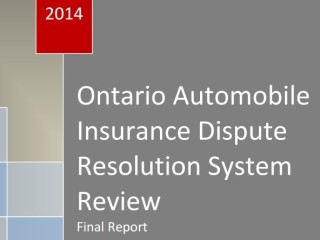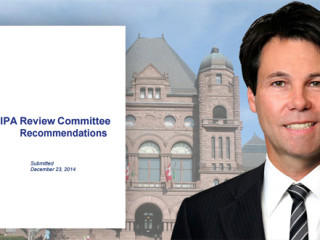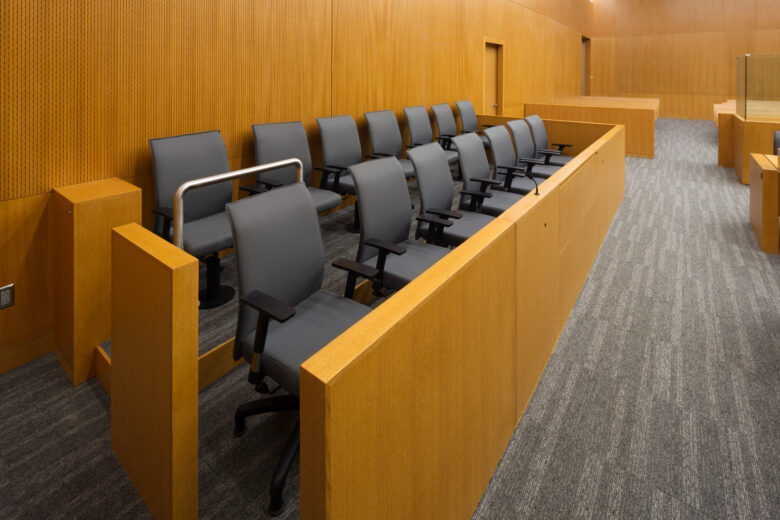This is a summary for OTLA members with trials fast approaching in Central West – specifically Milton and Peel (Brampton). There are three recent decisions from late February and early March. These cases may be of assistance to OTLA members who are currently considering bringing motions to strike jury notices in these jurisdictions.
It was recognized either explicitly or implicitly in each of the three cases that (a) there is a substantive right to a jury, but it is not an absolute right; (b) the burden of providing compelling reasons to strike the jury notice rests with the moving party; and (c) delay alone may in and of itself be enough to compel non-jury trial.
This was a decision of Justice Fitzpatrick out of the Milton jurisdiction from February 22, 2021. The action was commenced in 2012 concerning allegations of sexual touching and psychological abuse from the 1980s. A fixed trial date was set for March 22, 2021. The plaintiff moved to strike the jury notice so the trial could proceed as there was a notice from the Chief Justice of Ontario that jury trials will not be held until at least May 2021.
With the agreement of counsel, Justice Fitzpatrick made inquiries about the likelihood of hearing jury and non-jury trials in Milton. His Honour communicated the following:
- A zoom non-jury trial could be heard in Spring 2021;
- The case could be placed on the October 2021 blitz list as a jury or non-jury matter;
- The case could also be placed on the January 2023 blitz list as a jury or non-jury matter;
- Milton’s courthouse will be closed due to mold, but remediation work is scheduled to be completed by September 2021; and
- Central West has secured off-site facilities to safely select juries and has multiple courtrooms retrofitted to safely conduct in-person jury trials once the Chief Justice permits such trials to take place.
Aside from delay in and of itself, there was no evidence that the plaintiff will be prejudiced because of an adjournment to October 2021. For instance, there was no evidence about lost witnesses, lost memories, or lost evidence. There was no evidence of economic prejudice either (e.g. lost income, additional disbursements, etc.).
Justice Fitzpatrick found that the infection rate was trending downward in Canada and worldwide; that according to the government, people who wish to be vaccinated will be vaccinated by September 2021; and that proper court facilities will be available by October 2021. His Honour therefore determined that adjourning the matter to the October 2021 sittings was in the best interests of the parties.
However, the future of the pandemic remains uncertain. Therefore, the order was without prejudice to the Plaintiff’s right to move again to revisit the issue if the jury trial does not proceed in October.
Ideally, in my view, the plaintiff should have been given the right to move to revisit the issue before October. That way if it were clear in September that jury trials would not proceeding, the matter could still be converted to a non-jury trial and the case could still be heard as scheduled.
Sauve v. Steele, 2021 ONSC 1557
This was a decision of Doi J. in Milton. It was released a little more than a week after Justice Fitzpatrick’s decision in Longo (March 3, 2021). Interestingly, Justice Doi came to the opposite conclusion and struck the jury notice.
The action arose from a motor vehicle accident from January 2014. The action was commenced in January 2016. The mater was set for the March 2021 trial list. The parties were essentially ready for trial. The court went through the history of how the pandemic has affected court operations. It was recognized that jury trials would not proceed until at least May 3, 2021.
Leave was granted to bring the motion. There are two potential tests for seeking leave: (1) there is a substantial and unexpected change of circumstances since passing the trial record; or (2) it is in the interests of justice to hear the motion. The impact of the pandemic on the civil justice system satisfied both tests.
Justice Doi emphasized that broad discretion is given to motions judges in these motions since they are the ones most knowledgeable about local conditions and how to respond to those conditions.
In this motion, the plaintiffs presented evidence that delaying the trial will cause potential prejudice. Expert reports will more likely have to be updated, which will be an additional cost. Also, the Insurance Act mandates that only 70% of past income losses are recoverable. If the trial is adjourned and the plaintiffs are awarded past income loss, they will lose 30% of that loss over the period of delay.
Like Justice Fitzpatrick in Longo, Justice Doi made inquires of the Regional Senior Justice and learned the following:
- Civil jury trials will not happen until October 2021 at the earliest;
- The Milton courthouse is undergoing renovations and will not reopen until Fall 2021 at the earliest;
- Criminal and family matter will be prioritized over civil jury matters; and
- Non-jury trials can likely be accommodated in March 2021.
Justice Doi found that the trial cannot proceed in March as a jury matter and there is no certainty that the pandemic will allow for jury trials in the Fall. There was a crisis in the civil justice system. As a result, the jury notice was struck so the matter could proceed in the fairly near future.
Mohan v. Howard, 2021 ONSC 2064
This was a decision out of Brampton. While this is not a Milton case, Brampton and Milton are close geographically and both are in the Central West Region. I therefore think it makes sense to group Mohan with Sauve and Longo. There was also a unique order issued that could be used by OTLA members throughout the province.
The action arose from an MVC from October 2011. The matter was schedule for trial in January 2021.
In January 2021 the parties appeared before Regional Senior Justice Ricchetti in “Speak To” Court and learned that there will be a very long delay before jury trials will resume in Peel. The trial date was vacated because of the pandemic. But for the pandemic, the parties were ready for trial.
The plaintiff brought a motion to strike the jury notice. The motion was heard by Justice Baltman on February 9, 2021. If the notice was struck, the parties were aiming for a trial in May or June 2021.
It seems that Justice Baltman made inquiries above and beyond what Justice Ricchetti reported in “Speak To” Court, and found:
- Non-jury virtual trials can happen in Brampton at any time; and
- It is practically certain that civil jury trials will not take place until the latter part of 2021 at the earliest.
Justice Baltman recognized that judges are given discretion to respond to local conditions since there is no single province-wide solution to the pandemic challenges.
Her Honour found that it is impossible to predict when juries will be able to safely reconvene given the vagaries of the virus and the uncertainty involving the vaccination process. It was recognized, however, that circumstances may change.
Interestingly, relying upon the analysis in Solanki v. Reilly, 2020 ONSC 8031, Justice Balman made the following order to ensure as much as possible the matter could proceed in May or June 2021:
- The jury notice is conditionally struck.
- If jury trials are proceeding when the case is called, the matter will be automatically converted to a jury trial.
- If the non-jury trial cannot be reached when scheduled, the jury notice will be automatically reinstated, without prejudice to bring another motion to strike the revived jury notice.
The potential issue with this order is that you may be preparing your case as a non-jury matter only to find, on the eve of trial, that it is being converted to a jury matter, requiring last minute adjustments.
Summary & Analysis
In reviewing all three cases, I think the following are important considerations when putting together the materials to strike a jury notice.
- Don’t forget to ask for leave. You should get it without a problem. Just remember to address the issue.
- It is probably best to bring your motion within 1-2 months of your trial sitting so that the information is current, otherwise, there may be too much guessing.
- Encourage the Judge to make inquiries with the Regional Senior Justice and court staff so that the parties have the most current information.
- Emphasize what is happening locally and on the local decisions. For example, what is happening in Toronto is not necessarily indicative of what is happening in Milton and vice versa. It seems non-jury Zoom trials can happen now in Milton and Brampton.
- You may be able to use the closure of the Milton courthouse to your advantage to argue your trial should proceed by Zoom without a jury.
- Look to see what zone your jurisdiction is in when putting together your materials. If you are in the Gray or Red Zone, you may be able to use that to argue the jury notice should be struck – depending when your trial is scheduled.
- Present evidence of actual or potential prejudice in the event of delay – e.g. updating expert reports, continued income loss, continued out of pocket expenses, delayed treatment, etc.
- If you have an MVC case, note how delay causes prejudice because of the deductible and how income losses are calculated. The deductible goes up every year with inflation and general damages do not seem to be increasing at the same rate – as there is no mathematical formula for determining pain and suffering. Further, 30% of any before-trial income losses are not recoverable.
- Emphasize that decisions should be made on what we know right now about right now. Considerations about the future are speculative at best. A jury notice should be struck now – perhaps without prejudice to a Defendant’s right to move to reinstate it later if conditions change. Alternatively, jury notices should be struck now, but the matter will be converted to a jury trial automatically if jury trials are in fact proceeding during the sittings, or the non-jury matter is not heard when scheduled.
- Longo supra can probably be distinguished. I think in that case a delay of 6 months was not a compelling factor. The action stemmed from alleged abuse from the 1980s and delay in and of itself was the only prejudice. It was probably challenging for Justice Fitzpatrick to find a delay of 6 months to be unacceptable or unreasonable when the incidents took place almost 40 years prior.
- You may wish to emphasize that broad discretion is given to the motions Judge to give the Judge confidence about the tough decision to strike the notice and deprive a party of an important substantive right.














